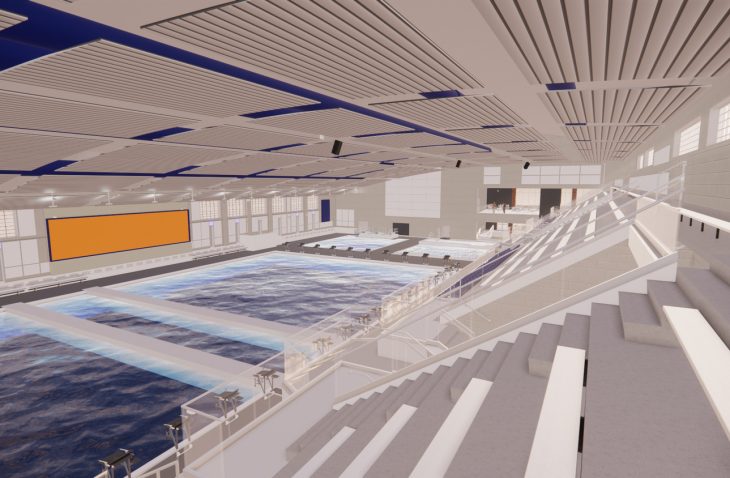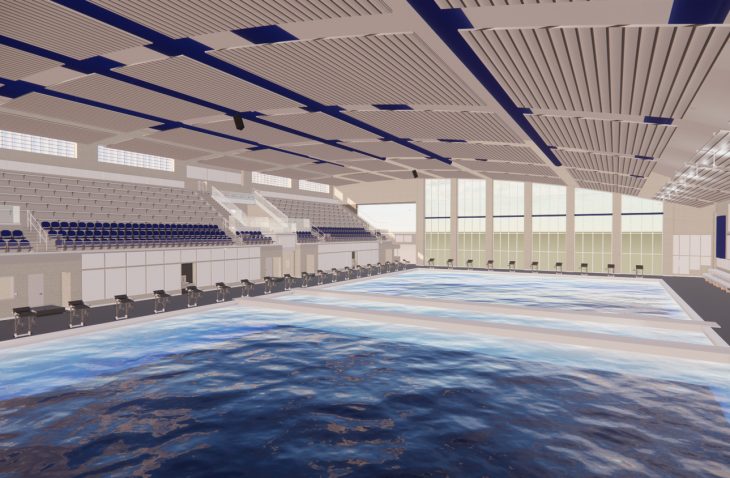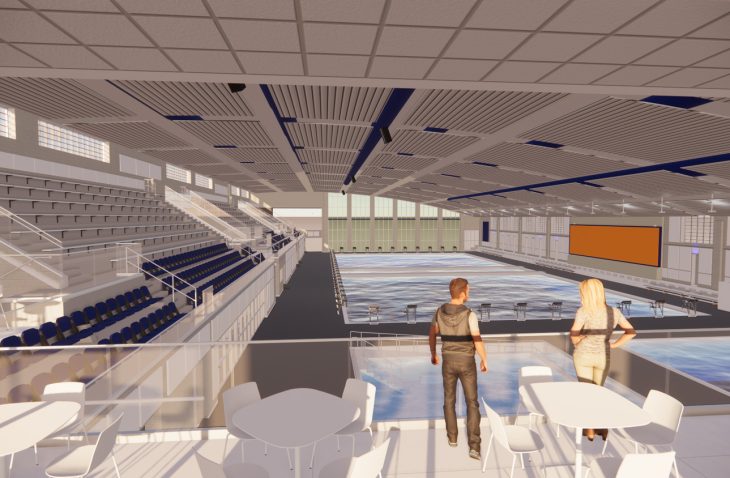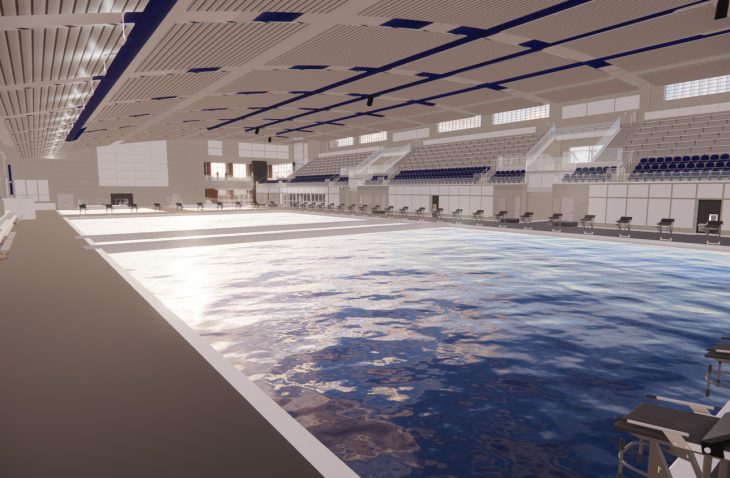New Natatorium
Carmel High School’s well-recognized swim team attends the U.S. Olympic qualifications each year. Despite the school’s exemplary swimming program, however, its existing natatorium has very poor speech intelligibility, high background noise, long reverberation, and the loudspeaker design was inadequate. Due to the lack of acoustic treatment and high mechanical noise, it is difficult to understand speaking even from person-to-person.
None of these issues will be present in the school’s new natatorium, for which IMEG provided audiovisual and acoustic design.
In collaboration with the architect, the IMEG team designed professional audio and integrated acoustics that includes exact loudspeaker aim and predicted coverage in a large room with a high percentage of reflective surfaces. The design includes the right balance of acoustic treatment in correct locations for good speech intelligibility and communication. During design, the team modeled the changes and provided the owner with audio files labeled “no acoustic treatment” and “with acoustic treatment.” These “aural” auditions enabled the owner to hear, prior to construction, what the space would sound like from a seat in the bleachers with and without acoustic treatment.
Also included in the new design is an underwater speaker system allowing coaches to communicate with swimmers. All acoustic treatment and loudspeakers were verified to work in a natatorium’s caustic environment of humidity and chemicals to prevent rust and corrosion.
Due to the need for speech intelligibility in an emergency situation, IMEG also provided acoustic modeling for the paging system to check the Speech Transmission Index (STI). Without the acoustic treatment as designed, STI would not have met the minimum requirement (0.5-1.0) for the space. This was important to the school as a matter of due diligence to predict safety and paging during emergency events.
Additional support was provided for updating of the natatorium’s scoreboard, video display, and cameras.
Listen to the audio files developed by IMEG during the design of this project:











